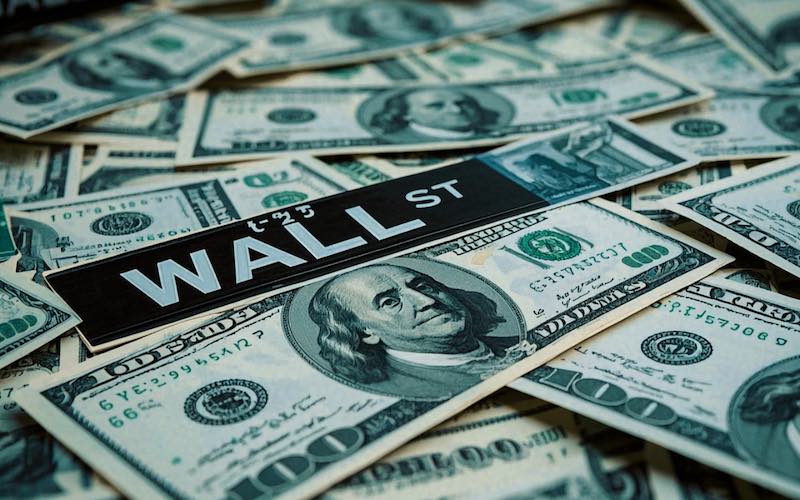Trump's tariff storm sweeps the world! Goods from 69 countries face tariffs ranging from 10% to 41%
2025-08-01 10:57:28

1. The shocking issuance of the executive order escalates the trade war
As the final consultation deadline of 12:01 AM ET on August 1st approached, Trump signed a major executive order, announcing that tariffs ranging from 10% to 41% would be imposed on imports from 69 trading partners starting seven days later. The order explicitly states that goods from countries not included in the appendix will be subject to a uniform 10% US tariff. Trump emphasized in the order that despite negotiations, some trading partners have "failed to adequately address imbalances in the trade relationship" or have "disagreed with the United States on economic and national security issues," necessitating high tariffs to "correct" these issues.
This decision marks a further escalation of the Trump administration's trade protectionism, aimed at re-establishing the United States's dominance in global trade through tariff barriers. However, this radical policy has also sparked widespread controversy in the international community, and the cost pressures facing American consumers and businesses are increasing.
2. Canada bears the brunt of the 35% tariff, targeting fentanyl.
Among the many countries affected, Canada is undoubtedly the hardest hit by Trump's tariff policy. Trump issued a separate executive order targeting Canada, raising tariffs on Canadian goods from 25% to 35%, citing Canada's "failure to effectively cooperate" in curbing the flow of fentanyl into the United States. This decision not only exacerbated tensions between the US and Canada but also cast a shadow over the future of the United States-Mexico-Canada Agreement (USMCA). As a key neighbor and trading partner of the United States, rising prices for Canadian goods will undoubtedly have a profound impact on the North American supply chain.
3. Brazil, India, and Switzerland each have their own "treatment," and trade wars are raging everywhere
Meanwhile, Trump's tariff policies against other countries were equally ruthless. Brazil was slapped with an exorbitant 50% tariff. While some sectors, such as aircraft, energy, and orange juice, were exempted, this decision was still seen as a "retaliatory" measure due to Brazil's lawsuit against Trump's ally, former President Jair Bolsonaro. India faced a 25% tariff due to a stalemate in negotiations over agricultural market access and India's purchase of Russian oil. Switzerland, a European economic powerhouse, was also not spared, being subject to a 39% tariff. These differentiated tariff policies targeting different countries demonstrate Trump's precise targeting and strategic planning in the trade war.
4. Mexico temporarily avoids 30% tariffs, USMCA becomes the key
In stark contrast to Canada's heavy-handed approach, Mexico has received relatively lenient treatment in this tariff storm. Trump announced a 90-day exemption for Mexico, temporarily suspending the 30% tariff on non-automotive and non-metal products. This decision stems from a July 31 phone call between Trump and Mexican President Alyssa Sheinbaum, during which both sides agreed to extend the existing tariff policy and continue negotiations toward a broader trade agreement. According to Mexico's Ministry of Economy, approximately 85% of Mexican exports meet the USMCA's rules of origin and are therefore exempt from the 25% tariff on fentanyl.
Mexico's "exemption" wasn't granted unconditionally, but rather constituted a concession to the United States under the USMCA framework. By strengthening its rules of origin and pledging to intensify its crackdown on fentanyl smuggling, Mexico secured a valuable 90-day reprieve. However, this doesn't mean Mexico can rest easy. If a new agreement isn't reached after 90 days, Mexican goods could still face the threat of high tariffs. Behind this "reprieve" lies a complex political and economic game between the US and Mexico.
5. South Korea surrenders: 15% tariff in exchange for huge investment
Under pressure from Trump's tariffs, South Korea chose to compromise. On July 29th, South Korea agreed to a 15% tariff on US goods, including automobiles, lower than the previously threatened 25%. In exchange, South Korea pledged $350 billion in investments in the US, with specific projects to be personally designated by Trump. This agreement not only allowed South Korea to avoid more severe tariff sanctions but also injected new momentum into US-South Korea relations. However, this "high-priced compromise" has been criticized within South Korea, with some arguing that it sacrificed long-term economic interests.
6. India's Toughness: Agriculture and Energy Issues Become Flashpoints
In contrast, India has chosen a tough stance in its negotiations with the United States. Due to serious disagreements over Indian agricultural market access and India's purchase of Russian oil, Trump imposed a 25% tariff on Indian goods and threatened further punitive tariffs. The Indian government stated that it would seek to resolve the dispute through the World Trade Organization (WTO) while accelerating trade negotiations with the European Union and other countries to reduce its dependence on the US market. India's tough stance has added further uncertainty to the trade landscape in South Asia.
7. Hidden Concerns in the United States: Rising Prices and Legal Disputes
1. Tariffs push up prices of consumer goods, putting increasing pressure on the public
While Trump's tariff policy is intended to protect American manufacturing, its side effects are already beginning to show. Data released by the U.S. Department of Commerce on July 30th showed that furniture and durable home equipment prices rose 1.3% in June, the largest increase since March 2022; recreational goods and vehicle prices rose 0.9%, the highest since February 2024; and clothing and footwear prices also rose 0.4%. These data indicate that high tariffs are driving up the cost of imported goods, which is gradually being passed on to American consumers. The rising cost of living could trigger a public backlash.
2. Judicial Questions: The Boundaries of Trump’s Power Are Challenged
Trump's use of emergency powers to impose high tariffs on global trading partners has also sparked strong skepticism within the US legal community. The Court of International Trade ruled in May 2025 that Trump's tariff actions exceeded his executive authority. On July 29th, judges of the Court of Appeals for the Federal Circuit in Washington further expressed skepticism about the policy during oral arguments, finding it lacked clear legal basis. The intensifying legal controversy could cast a legal shadow over Trump's trade war.
8. China Agreement Unresolved: August 12th Becomes a Key Node
1. The US Treasury Secretary is optimistic and cautious
Amid the clamor of a global trade war, the trade negotiations between China and the United States have attracted considerable attention. In a CNBC interview on July 30, U.S. Treasury Secretary Jeffrey Bennett stated that the conditions for a trade agreement between the United States and China are "present," but "not 100% complete." He revealed that this week's Sino-U.S. trade talks in Stockholm "made considerable progress," with U.S. negotiators "holding firm" on key issues. However, with the August 12th deadline approaching, it remains uncertain whether the two sides can reach an agreement at the last minute.
2. Potential Impact on Global Supply Chains <br/>As the world's second-largest economy, China holds an irreplaceable position in the global supply chain. If China and the US fail to reach an agreement, the US could impose additional tariffs on more Chinese goods, which would not only drive up domestic prices but also trigger a chain reaction in the global supply chain. Conversely, a compromise would provide a boost to global trade and ease current tensions.
Summary: Trump's trade gamble and the new global landscape
Trump's tariff policy is like a global trade storm, striking precisely at countries like Canada, Brazil, and India, while also leaving room for negotiation for countries like Mexico and South Korea. This gamble, ostensibly called "reciprocal tariffs," reflects Trump's consistent hardline approach while also exposing the potential risks of his policies both domestically and internationally. From rising prices to legal disputes, domestic pressures are accumulating in the United States. From the uncertainty surrounding the China agreement to the turmoil in the global supply chain, the international trade landscape is facing a profound reshaping.
Market sentiment was further dampened, with Asian stocks generally lower. Investors worried that a new round of tariffs could escalate global trade tensions, but there was no significant safe-haven flow into the gold market.
At the same time, holdings of SPDR Gold Trust, the world's largest gold ETF, fell slightly by 0.09%, reflecting a weakening of market investment demand for gold.
Market focus is now turning to the U.S. non-farm payroll report, due out in the evening of Beijing time. After the Federal Reserve kept interest rates unchanged this week, labor market data will become a key indicator of the Fed's next policy direction.
At 10:55 Beijing time, spot gold was trading at $3290.56 per ounce.
Traders said that if the employment data is strong, it may further push up the US dollar and increase downward pressure on gold; otherwise it may provide short-term support for gold prices.
- Risk Warning and Disclaimer
- The market involves risk, and trading may not be suitable for all investors. This article is for reference only and does not constitute personal investment advice, nor does it take into account certain users’ specific investment objectives, financial situation, or other needs. Any investment decisions made based on this information are at your own risk.





















